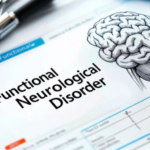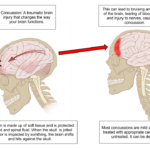
Top 5 Home Exercises for Back Pain Relief
Back Pain: A Comprehensive Guide to Understanding, Managing, and Preventing
Back pain is a prevalent ailment that impacts millions of individuals across the globe. It’s a condition that can range from mild discomfort to severe agony, affecting daily life and overall well-being. To navigate the complexities of back pain effectively, it’s crucial to have a comprehensive understanding of its various aspects. In this guide, we will explore back pain from multiple angles, encompassing an overview, its causes, available treatment options, and preventive strategies.
Overview of Back Pain:
Back pain, or dorsalgia, refers to discomfort or pain in the area between the neck and the pelvis. It is one of the most common health complaints and can affect people of all ages. Back pain can be classified into two broad categories:
- Acute Back Pain: This type of back pain is usually short-term and can result from injuries, accidents, or sudden movements. It often resolves on its own or with minimal treatment.
- Chronic Back Pain: Chronic back pain is persistent and can last for weeks, months, or even years. It may be linked to underlying medical conditions, lifestyle factors, or past injuries.
Causes of Back Pain:
Back pain can have a variety of causes, including:
- Muscle or Ligament Strain: Overexertion, poor posture, or sudden movements can strain muscles or ligaments, leading to pain.
- Herniated Disc: A herniated or bulging disc can exert pressure on nerves, causing pain, numbness, or weakness in the legs.
- Arthritis: Inflammation of the spinal joints can result in stiffness, pain, and reduced mobility.
- Osteoporosis: Weak bones are more susceptible to fractures and can contribute to back pain.
- Spinal Stenosis: Narrowing of the spinal canal can lead to nerve compression and associated pain.
- Scoliosis: An abnormal curvature of the spine can cause pain and limit mobility.
- Infections or Tumors: Although rare, spinal infections or tumors can be the source of back pain.
Treatment Options for Back Pain:
Top 5 Home Exercises for Back Pain Relief
Treatment for back pain can vary depending on its severity and underlying causes. Here are some common approaches:
- Self-Care: For mild back pain, rest, gentle stretching, and over-the-counter pain relievers can often provide relief.
- Physiotherapy: Physiotherapists can create personalized exercise programs to alleviate pain and improve mobility.
- Chiropractic Care: Chiropractors use manual manipulation to adjust the spine and joints, promoting pain relief and better alignment.
- Medications: In some cases, prescription medications may be required to manage pain and inflammation.
- Injections: Epidural steroid injections can be used to reduce inflammation and provide relief from certain types of back pain.
- Surgery: Surgical intervention is considered in severe cases, such as herniated discs or structural issues.
- Alternative Therapies: Techniques like osteopathy, acupuncture, and massage therapy can also help manage back pain.
Preventive Tips:
Preventing back pain is often more effective than treating it. Here are some preventive strategies:
- Maintain Good Posture: Proper posture, whether sitting or standing, reduces strain on your back.
- Stay Active: Regular exercise, including strengthening and stretching, can help support your back and core muscles.
- Ergonomics: Ensure your workspace is ergonomically designed to minimize stress on your back.
- Lift Correctly: When lifting heavy objects, use your legs and not your back.
- Healthy Lifestyle: A balanced diet, maintaining a healthy weight, and avoiding smoking can contribute to back health.
- Stress Management: High stress levels can exacerbate back pain, so consider stress-reduction techniques.
- Proper Mattress and Pillow: Invest in a mattress and pillow that provide adequate support for your spine.
- Regular Checkups: Stay proactive about your health, and seek prompt treatment for any back pain symptoms.
Back pain is a widespread issue with multiple potential causes and treatment options. By understanding the nuances of back pain, you can take proactive measures to prevent it and, if necessary, seek the most appropriate treatment for your specific condition. A combination of good habits, a healthy lifestyle, and professional guidance can go a long way in managing and preventing back pain, ultimately leading to a more comfortable and pain-free life.
How physiotherapy and chiropractic manual therapy helps.
“Physiotherapy and Chiropractic Manual Therapy: Your Allies Against Back Pain”
Back pain is a common and often debilitating issue that can significantly impact your quality of life. When confronted with this challenge, seeking the right treatment is crucial for relief and recovery. Two prominent options that can be highly effective in addressing back pain are physiotherapy and chiropractic manual therapy. In this guide, we will explore how these two approaches can be your allies in the battle against back pain.
Understanding Physiotherapy:
Lear more about How Top 5 Home Exercises for Back Pain Relief
Rehabilitation, Recovery, Wellness, Improvement, Restoration
Physiotherapy, also known as physical therapy, is a healthcare discipline that focuses on helping individuals regain and maintain their physical function, mobility, and overall well-being. It employs a variety of techniques to alleviate pain, improve flexibility, and strengthen the body. Here’s how physiotherapy can assist in managing back pain:
- Personalized Assessment: A physiotherapist will conduct a thorough assessment of your condition, including a review of your medical history and a physical examination. This enables them to create a personalized treatment plan tailored to your specific needs.
- Targeted Exercises: Physiotherapists prescribe exercises that are designed to strengthen the muscles supporting your spine, enhance flexibility, and improve posture. These exercises can help relieve pain and reduce the risk of recurrence.
- Manual Therapy: Hands-on techniques, such as soft tissue manipulation, massage, and joint mobilization, are used to alleviate pain, reduce muscle tension, and promote relaxation. These manual therapies can offer immediate relief from discomfort.
- Pain Management: Physiotherapists employ pain-relief modalities such as heat, ice, ultrasound, and electrical stimulation to reduce pain and inflammation.
- Education: Patients receive guidance on maintaining proper posture, ergonomics, and lifestyle adjustments to prevent future back pain.
- Rehabilitation and Recovery: For those recovering from injuries or surgeries, physiotherapy plays a crucial role in the rehabilitation process, helping individuals regain mobility and strength.
Chiropractic Manual Therapy:
Alignment, Adjustment, Relief, Well-being, Holistic
Chiropractic care is centered on the manual manipulation of the spine and joints to promote pain relief, improve alignment, and enhance overall well-being. Chiropractors are trained to identify misalignments in the spine, known as subluxations, and correct them through adjustments. Here’s how chiropractic manual therapy can be beneficial for back pain:
- Spinal Alignment: Chiropractors use precise and controlled adjustments to realign the spine, reducing pressure on nerves, promoting mobility, and alleviating pain.
- Immediate Relief: Chiropractic adjustments can provide rapid relief for acute back pain episodes, helping patients feel better almost instantly.
- Improved Nervous System Function: The spine houses the central nervous system, and by ensuring proper spinal alignment, chiropractic care can optimize nervous system function.
- Holistic Approach: Chiropractors often take a holistic approach, considering the patient’s overall health and lifestyle. They may offer advice on nutrition, exercise, and stress management.
- Preventive Care: Regular chiropractic adjustments can help prevent future back pain episodes by maintaining proper spinal alignment.
- Tailored Treatment Plans: Chiropractors design individualized treatment plans based on a patient’s specific condition and needs.
Choosing the Right Approach:
Both physiotherapy and chiropractic manual therapy offer valuable means of addressing back pain. The choice between the two will depend on the nature of your back pain, your medical history, and personal preferences. It’s often beneficial to consult with a healthcare professional who can guide you towards the most suitable treatment option.
Both physiotherapy and chiropractic manual therapy are effective tools in the fight against back pain. They provide personalized solutions for pain relief, improved mobility, and overall well-being. By working closely with skilled professionals in either field, you can regain control over your life and enjoy a pain-free future.
Back Pain FAQs:
What are the common causes of back pain?
Back pain can result from various causes, including muscle strain, herniated discs, arthritis, spinal stenosis, scoliosis, and even infections or tumors in rare cases.
How long does back pain typically last?
The duration of back pain can vary. Acute back pain often improves within a few weeks, while chronic back pain may persist for months or longer.
When should I seek medical attention for back pain?
You should consider seeing a healthcare professional if your back pain is severe, lasts for more than a few days, is accompanied by other symptoms like numbness or weakness, or interferes with your daily activities.
Can poor posture contribute to back pain?
Yes, poor posture can strain the muscles and ligaments in your back, leading to discomfort and potentially chronic pain.
Are there effective ways to prevent back pain?
Preventive measures include maintaining good posture, regular exercise, lifting correctly, managing stress, and seeking prompt treatment for any back pain symptoms.
Physiotherapy FAQs:
What conditions can physiotherapy help with, besides back pain?
Physiotherapy is beneficial for a wide range of conditions, including musculoskeletal issues, sports injuries, post-operative rehabilitation, and more.
What can I expect during a physiotherapy session?
A typical session may involve a combination of exercises, manual therapy, modalities like heat or ultrasound, and education on self-care and preventive measures.
How long does it take to see results from physiotherapy for back pain?
The timeline for improvement varies, but many patients experience relief within a few sessions. The number of sessions needed depends on the severity of the condition.
Is physiotherapy suitable for people of all ages?
Yes, physiotherapy can benefit individuals of all ages, from children to seniors.
Do I need a referral from a doctor to see a physiotherapist?
In many cases, a referral is not required, and you can directly schedule an appointment with a physiotherapist.
Chiropractic Manual Therapy FAQs:
What is a chiropractic adjustment, and is it safe?
A chiropractic adjustment involves using controlled force to realign the spine. When performed by a licensed chiropractor, it is generally safe and effective.
Are chiropractic adjustments painful?
Chiropractic adjustments are typically not painful. Many patients report feeling relief and improved mobility after an adjustment.
How many chiropractic sessions are needed for back pain relief?
The number of sessions required varies depending on the individual and their specific condition. A chiropractor will create a personalized treatment plan.
Can chiropractic care help with conditions other than back pain?
Yes, chiropractic care can address a wide range of conditions, including headaches, neck pain, and joint issues.
Is chiropractic care suitable for everyone?
Chiropractic care is generally safe for most individuals, but it may not be recommended for people with certain health conditions. Consult with a chiropractor to determine if it’s appropriate for you.
These FAQs provide valuable insights into common questions related to back pain, physiotherapy, and chiropractic manual therapy, helping individuals make informed decisions about their healthcare.
Top 5 Home Exercises for Back Pain Relief
Back pain is a common issue that can be alleviated through regular exercise. However, it’s essential to approach these exercises with caution, especially if you have an existing medical condition. This guide presents the top five home exercises for back pain relief, along with a vital medical disclaimer emphasizing the importance of consulting a healthcare professional before starting any exercise regimen.
Medical Disclaimer:
Before attempting any exercise, consult a healthcare professional or physiotherapist, especially if you have a pre-existing medical condition or are experiencing acute back pain. These exercises are intended for general guidance and may not be suitable for everyone. If you experience pain or discomfort while performing any exercise, stop immediately and seek medical advice.
Exercise 1: Cat-Cow Stretch-Top 5 Home Exercises for Back Pain Relief
Flexibility, Mobility, Soothing, Relaxation, Relief
Instructions:
- Begin on your hands and knees in a tabletop position.
- Inhale as you arch your back, lifting your head and tailbone (Cow Pose).
- Exhale as you round your back, tucking your chin and tailbone (Cat Pose).
- Perform this gentle, rhythmic movement for 1-2 minutes to promote flexibility and alleviate back tension.
Exercise 2: Pelvic Tilts-Top 5 Home Exercises for Back Pain Relief
Strengthening, Core Stability, Support, Alignment, Comfort
Instructions:
- Lie on your back with your knees bent and feet flat on the floor.
- Tighten your abdominal muscles and press your lower back into the floor.
- Hold for 5 seconds, then release.
- Perform 10-15 repetitions to strengthen your core and stabilize the lower back.
Exercise 3: Child’s Pose-Top 5 Home Exercises for Back Pain Relief
Relaxation, Stretch, Decompression, Ease, Relief
Instructions:
- Begin on your hands and knees in a tabletop position.
- Sit back on your heels, extending your arms forward and lowering your chest toward the ground.
- Hold the stretch for 30 seconds to 1 minute, breathing deeply to promote relaxation and spinal decompression.
Exercise 4: Knee-to-Chest Stretch-Top 5 Home Exercises for Back Pain Relief
Relaxation, Flexibility, Soothing, Comfort, Relief
Instructions:
- Lie on your back with your legs extended.
- Gently bring one knee towards your chest, holding it with both hands.
- Hold the stretch for 20-30 seconds and then switch legs.
- Repeat 2-3 times on each leg to ease lower back tension and increase flexibility.
Exercise 5: Bridge Exercise-Top 5 Home Exercises for Back Pain Relief
Strengthening, Support, Mobility, Comfort, Alleviation
Instructions:
- Lie on your back with your knees bent and feet flat on the floor.
- Tighten your glutes and lift your hips off the ground, creating a straight line from shoulders to knees.
- Hold for 5-10 seconds and lower your hips back to the ground.
- Perform 10-15 repetitions to strengthen your core and support your lower back.
These home exercises can be effective in relieving back pain, but it’s essential to emphasize that not all exercises are suitable for everyone. The guidance and approval of a healthcare professional are crucial before starting any exercise program, especially if you have an existing medical condition or are experiencing acute back pain. Your safety and well-being should always be the top priority.
Have Questions or Need Assistance?
Don’t hesitate to reach out to us:
- Call/WhatsApp: +9818911195
- Book Appointment with Experts
We are here to lend our support on your journey toward improved movement and overall well-being.






